未選択
-
A journey through the North’s most scenic frontier
Tucked in Vietnam’s remote northern mountains, Ha Giang province is a destination that rewards the curious and the adventurous. Whether you're an experienced rider or a first-time explorer, planning your route carefully can make the difference between a rushed ride and a deeply rewarding journey.
Understanding the Route Before You Ride
Before hitting the road, it's essential to get familiar with the ha giang loop map. The loop typically starts and ends in Ha Giang City, stretching over 350 kilometers of winding roads, sharp passes, and breathtaking views. Key towns along the loop include Tam Son, Yen Minh, Dong Van, and Meo Vac, forming a circular route through rugged karst landscapes and ethnic minority villages.
Having a clear idea of the map allows you to budget your time wisely, know where fuel stations are, and anticipate which segments offer accommodation or require cautious riding. A physical map or offline GPS app is strongly recommended due to limited mobile service in the mountains.

Your First Stop with a View: Quan Ba Heaven Gate
One of the most iconic spots early in the loop is quan ba heaven gate, located just an hour’s drive from Ha Giang City. This natural gateway offers the first sweeping panoramic views of the surrounding valleys and limestone peaks, giving travelers a stunning preview of what’s to come.
As you ascend the winding road, the temperature cools and the scenery shifts. At the top, you’ll find a viewpoint overlooking the famous Twin Mountains (Fairy Bosom Hills), a natural wonder shrouded in local legends. It’s a great spot to stretch your legs, take photos, and mentally prepare for the adventure ahead.
Plotting the Highlights on the Ha Giang Loop Map
The ha giang loop map includes several must-see destinations, each with its unique flavor. In Yen Minh, pine forests and valleys create a serene atmosphere, ideal for a lunch break or overnight stay. Dong Van boasts a historical Old Quarter with stone houses and vibrant Sunday markets, perfect for cultural immersion.
Continuing on, the Ma Pi Leng Pass presents the most dramatic scenery on the loop, where you ride along cliffs overlooking the Nho Que River. This segment is often considered the crown jewel of the route. Finally, Meo Vac offers a vibrant local market and access to remote villages that remain largely untouched by tourism.
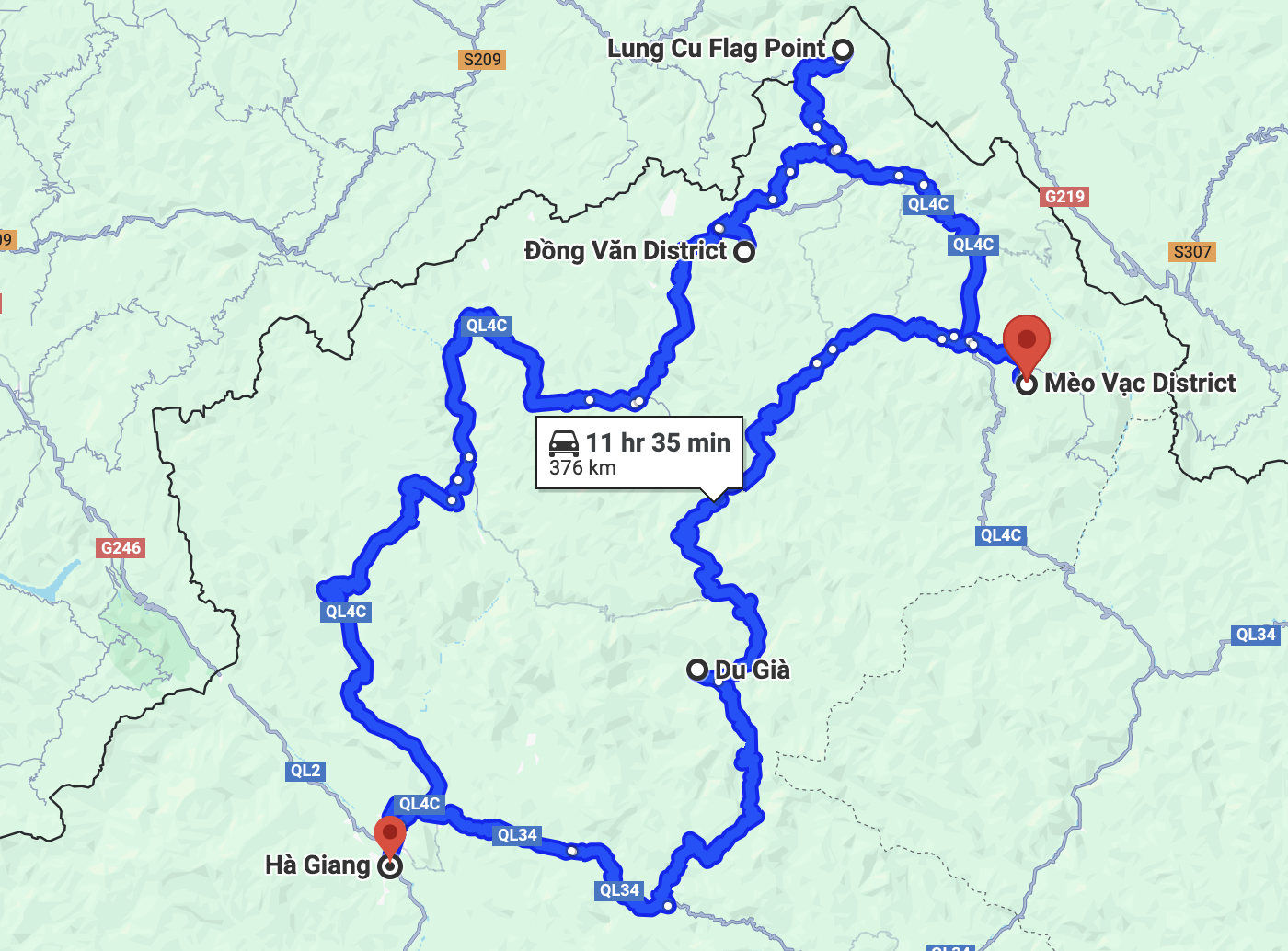
Using a map, you can plan detours to hidden gems like Lung Cu Flag Tower (Vietnam’s northernmost point), Du Gia waterfall, and traditional villages that showcase the culture of ethnic groups such as the Hmong, Tay, and Dao.
Where to Stay and How to Prepare
Throughout the loop, you'll find guesthouses and homestays in most major towns. If you're starting your journey in the capital of the province, ha giang city hostel is a reliable choice. They offer motorbike rentals, route briefings, safety gear, and even guided tours if you prefer not to ride solo.
Staying at a hostel with local expertise ensures you’re not just following a route, but truly understanding the cultural and natural significance of each stop. They often provide updated ha giang loop map details based on current weather, road conditions, and local events.
Safety First: Navigating the Terrain
The Ha Giang Loop is known for its steep passes and hairpin turns. While the beauty is unmatched, the terrain demands focus and caution. Make sure your motorbike is in good condition and that you’re comfortable riding for long stretches. Bring a raincoat, protective gear, and backup fuel if venturing off the main path.

Knowing where medical stations or rest stops are located on your map can be a literal lifesaver in remote areas. It's also wise to inform your accommodation of your route in case of emergency.
Embrace the Unexpected Moments
While having a ha giang loop map helps you stay on course, don’t be afraid to take spontaneous detours or pause when something catches your eye. Whether it’s joining a local festival, helping farmers with their harvest, or sipping tea with a curious child, the real magic of the loop lies beyond the landmarks.
Let your journey be flexible, respectful, and open-hearted. The mountains may test your stamina, but they’ll also gift you with experiences that last a lifetime.
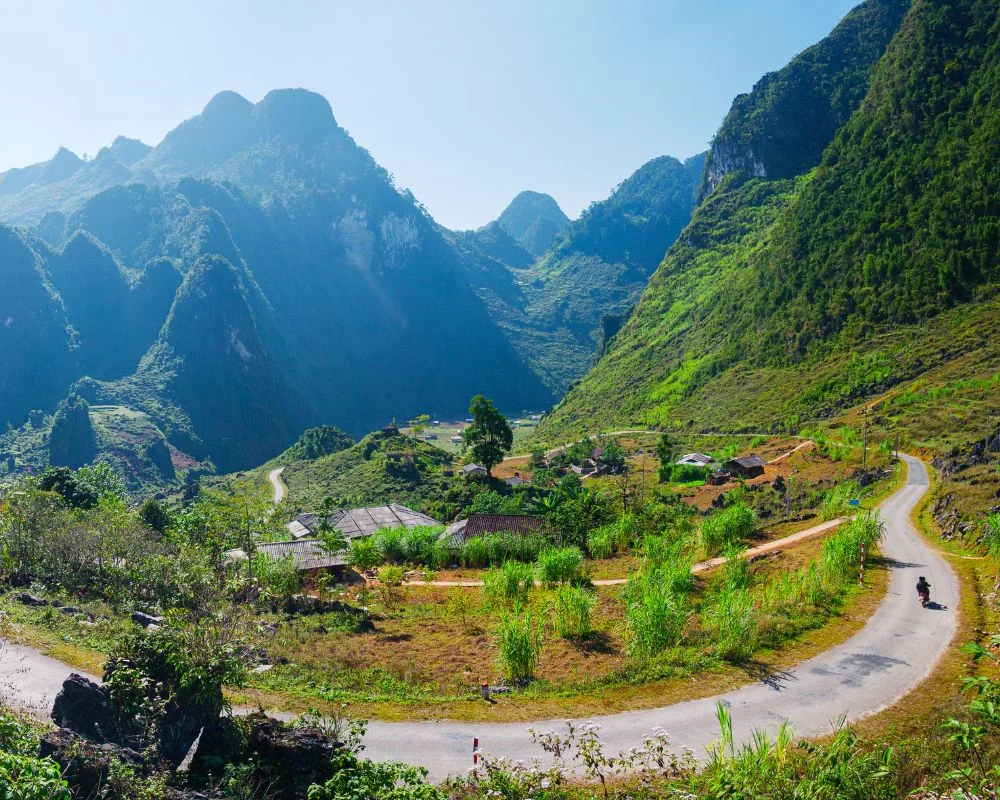
Final Thoughts Before You Ride
The Ha Giang Loop isn’t just a road trip—it’s a cultural gateway to one of Vietnam’s most captivating regions. With the right planning, especially using a reliable ha giang loop map, and support from experienced hosts like those at ha giang city hostel, your adventure can be safe, smooth, and unforgettable.
Whether you're chasing scenic beauty or local connections, your journey through Quan Ba Heaven Gate and beyond will redefine what travel means.
PR -
Where culture speaks louder than words in Northern Vietnam
Deep in the rugged mountains of northern Vietnam lies a region where time slows down and tradition takes center stage. This is where cultural heritage isn’t displayed in museums but lived out every day—in vibrant markets, remote villages, and warm local smiles.
Discovering the Soul of Ha Giang on a Sunday Morning
For anyone traveling the Ha Giang Loop, timing your visit to coincide with the meo vac market on Sunday is essential. Tucked into a valley surrounded by towering limestone mountains, Meo Vac comes alive once a week with its most anticipated event—the bustling highland market.
The market gathers locals from different ethnic groups like the Hmong, Dao, Tay, and Lolo, all dressed in their colorful traditional attire. They walk or ride motorbikes down narrow mountain paths, carrying livestock, textiles, herbs, and handmade goods. For visitors, it’s a rare and authentic insight into local life—far from touristy hotspots.

What Makes Meo Vac Market So Unique
Unlike city markets, the meo vac market is more than just a place of trade. It serves as a weekly reunion, a cultural celebration, and a critical social event for locals. You’ll see elders catching up over bowls of corn wine, young people flirting shyly by the clothing stalls, and entire families bargaining over pigs or chickens.
Wandering through the maze of vendors, you’ll discover brightly dyed fabrics, medicinal herbs, mountain vegetables, and steaming pots of local delicacies. Don’t miss trying thắng cố, a traditional stew, or the handmade sausages flavored with local spices.
An Artistic Gem: Visiting Lung Tam Village
Just a short journey from Meo Vac, the peaceful lung tam village offers a different but equally enriching cultural experience. This village, inhabited mostly by Hmong people, is renowned for its centuries-old craft of linen weaving and indigo dyeing.
Walking through Lung Tam, you can observe the intricate process of hemp weaving—from harvesting and spinning the fibers to dyeing and hand-embroidering beautiful textiles. These skills have been passed down through generations and are now part of community-based tourism supported by local cooperatives.

Purchasing textiles directly from Lung Tam not only brings home a meaningful souvenir but also supports local women artisans who sustain their families and preserve their heritage through this craft.
Connecting the Dots: Meo Vac to Lung Tam on the Ha Giang Loop
Both meo vac market and lung tam village are key highlights along the famous Ha Giang Loop, a motorbike route that captures the best of northern Vietnam’s nature and culture. For travelers with an interest in community-based tourism and traditional lifestyles, this segment of the loop offers the perfect balance between scenery and substance.
Staying with ha giang loop hostels is a smart way to plan your journey. These hostels often offer cultural insights, bike rentals, route guidance, and connections to local guides or interpreters, helping you engage more meaningfully with the people and places you encounter.
How to Prepare for Your Visit
Reaching Meo Vac and Lung Tam requires both planning and a sense of adventure. Make sure to check the weather conditions before you ride, as the mountain passes can be slippery and visibility may be low in the fog. The best time to visit is during the dry season from September to April.
If you're heading to meo vac market, arrive in town on Saturday evening to rest and explore the early morning rush on Sunday. For lung tam village, a daytime visit gives you enough time to tour the textile workshops, meet the artisans, and enjoy a scenic picnic by the river.

Pack light but smart—include warm layers, sturdy shoes, a reusable water bottle, and a camera to capture the beauty of both culture and nature.
The Reward of Traveling Slow in Ha Giang
Many visitors to Vietnam race through the typical tourist circuit, but those who venture north into Ha Giang find a richer, more grounded experience. In places like meo vac market, culture is not a performance—it’s a way of life. In lung tam village, you don’t just buy art—you meet the people who create it by hand, with care and pride.
Whether you’re a photographer, cultural explorer, or simply someone looking to experience something genuine, Ha Giang offers an unforgettable journey. Let ha giang loop hostels be your base as you explore a part of Vietnam where stories are woven in fabric, and memories are traded at dawn.
-
A cultural journey through the mountains of Northern Vietnam
Tucked in the heart of Ha Giang Province, a hidden gem offers an unfiltered view into Vietnam’s rich ethnic culture. Travelers seeking authentic experiences will find both wonder and warmth in the vibrant atmosphere of Meo Vac and its surroundings, especially during market day.
A Sunday Morning Like No Other in Meo Vac
If you're traveling through Ha Giang’s rugged terrain, plan your journey to coincide with a Sunday in Meo Vac. The meo vac market only takes place once a week, and it transforms the quiet mountain town into a lively cultural crossroads. Local ethnic groups including the Hmong, Tay, Dao, and Giay descend from the hills to trade, socialize, and celebrate their way of life.
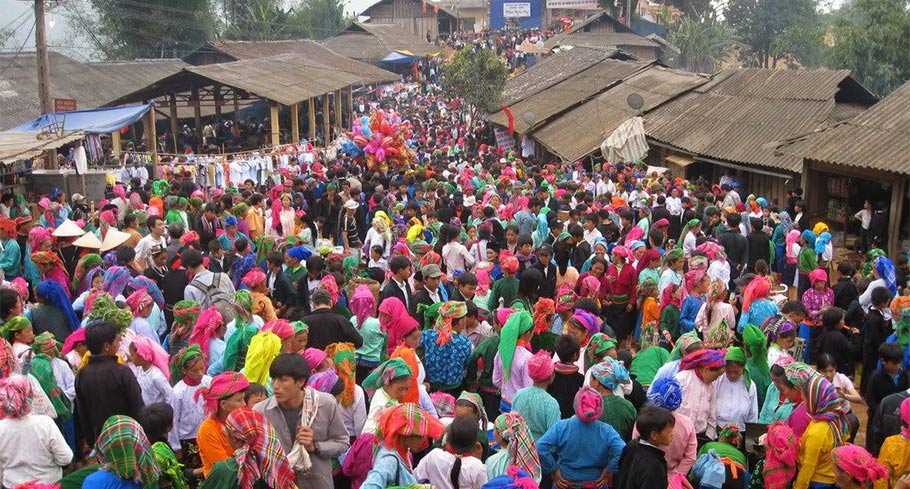
Arriving early gives you the best chance to witness the most activity. From colorful traditional garments to sounds of negotiation in different dialects, the market is a sensory feast. It's not just about buying and selling—it's about maintaining centuries-old traditions in a modern world.
Local Life on Display: Colors, Crafts, and Cuisine
Wandering through meo vac market, you’ll find rows of stalls selling textiles, fresh produce, spices, farming tools, and even livestock. The most visually striking are the handmade clothes and brocade accessories, each telling a story through embroidery and vibrant hues.
Food stalls invite you to try local delicacies such as thắng cố (a hearty stew) or corn wine brewed right in the nearby villages. These flavors might be new to the palate, but they speak volumes about the region’s deep-rooted connection to its land and traditions.
The Journey to Nho Que River: A Scenic Wonder Nearby
A visit to nho que river is the perfect complement to your market experience. Just a short drive from Meo Vac, this jade-green river cuts dramatically through the Tu San Canyon, creating one of the most majestic natural landscapes in all of Vietnam. While not as bustling as the market, the river offers peace, perspective, and a chance to slow down.
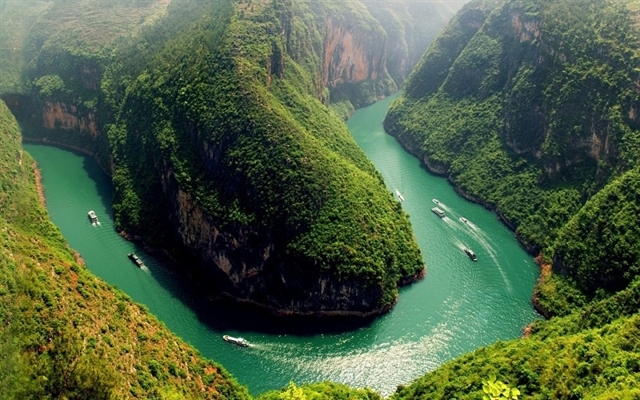
You can rent a boat to cruise through the canyon, where sheer cliffs rise above you and clouds drift between the peaks. Photographers and nature lovers alike find this to be a highlight of their Ha Giang Loop experience. The contrast between the human energy of the market and the serenity of the river makes for a balanced adventure.
The Ha Giang Loop: Where Culture and Nature Intersect
Both meo vac market and nho que river are key stops along the Ha Giang Loop, a motorbike route that attracts thrill-seekers, solo travelers, and cultural explorers. The loop weaves through mountain passes, ethnic villages, and natural wonders, offering changing scenery with every turn.
To make the most of this experience, plan your accommodations with ha giang loop hostels, which specialize in helping travelers discover the region responsibly. These hostels often provide motorbike rentals, local maps, group tours, and guidance that make navigating the area much easier and more enriching.
Tips for Visiting Meo Vac and Nho Que
Timing your visit is key. Arrive in Meo Vac on Saturday evening to rest before an early Sunday start at the market. From there, you can schedule a boat tour on the nho que river in the afternoon or early Monday morning when it's less crowded.
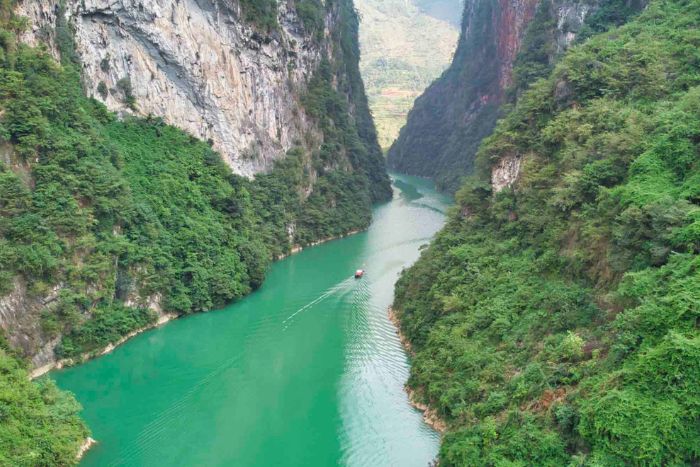
Prepare for a variety of weather conditions. Mornings in the mountains can be cold and misty, but the afternoons warm up quickly. Pack layers, waterproof gear, and proper footwear if you plan to hike or ride a motorbike on steep roads.
Most importantly, be respectful of local customs. Ask before taking photos, especially of people, and try to support local artisans and food vendors when possible. Your experience will be more meaningful when you engage with the community on their terms.
Why This Region Leaves a Lasting Impression
Northern Vietnam is often overshadowed by more famous destinations like Hanoi or Sapa, but places like Meo Vac and the nho que river offer something deeper—an unfiltered look into the lives of people who have thrived in these mountains for generations. From the bustling chaos of meo vac market to the breathtaking silence of the canyon below, this area is as diverse in experience as it is in landscape.
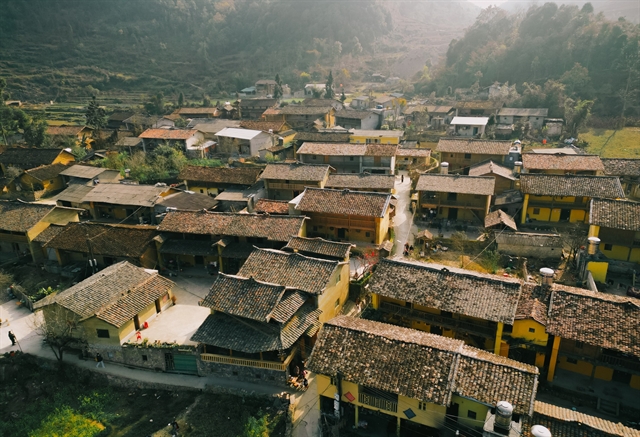
Whether you're a solo traveler on a motorbike, a photographer chasing unique light, or a cultural enthusiast eager to learn, the Ha Giang Loop has something to offer. Let ha giang loop hostels be your guide to unlocking it all, one turn at a time.
-
Discovering the soul of Vvietnam’s Northern highlands
In the far reaches of northern Vietnam, tucked between limestone mountains and winding roads, lies a cultural treasure that offers a true glimpse into the lives of ethnic minorities. Far from the typical tourist route, Meo Vac Market stands out as an authentic, immersive experience that draws visitors eager to connect with local traditions and daily life.
An Early Start for a Colorful Encounter
To truly appreciate Meo Vac Market, you’ll want to arrive early on Sunday morning. As the sun begins to rise, the quiet town of Meo Vac springs to life. Villagers from surrounding hamlets make their way to town on foot, by motorbike, or even with horses, dressed in their best traditional outfits. The vibrant colors of embroidered skirts and patterned headscarves immediately signal this is no ordinary market.

Each section of the market has its own rhythm. From bustling produce stalls to livestock pens echoing with the bleats of goats and pigs, every corner offers a new discovery. You’ll see families trading handmade textiles, young people choosing new outfits, and elders bartering with timeworn skill. This isn’t just shopping—it’s an essential social gathering that reinforces bonds and celebrates heritage.
Tradition, Taste and Trade in Every Step
Food is a major highlight at Meo Vac Market. As you wander the aisles, the scent of grilled skewers and simmering soup draws you to rustic food stalls where locals gather for breakfast and conversation. Try a bowl of thắng cố, a traditional soup made from horse meat and offal, or sample sticky rice wrapped in banana leaves for a milder option.
The market also showcases an impressive array of handmade items, from silver jewelry to embroidered fabrics and natural dyes. Many of these crafts come from villages surrounding Meo Vac, including communities where ancient skills are still passed down through generations.
A Tranquil Escape to Nam Dam Village
While Meo Vac offers energy and cultural buzz, a visit to Nam Dam Village provides a peaceful contrast. Located near Quan Ba, this serene Hmong village is known for its preserved traditions, earth-walled houses, and hospitality. It’s an ideal place to rest before or after your trip to Meo Vac and soak in the slower pace of rural life.

In Nam Dam, you can stay in a traditional homestay, help prepare meals using local ingredients, and enjoy storytelling by the fireplace. Guided treks around the area lead to rice terraces, waterfalls, and panoramic mountain views. The village’s commitment to sustainable tourism makes it a meaningful destination, both for cultural learning and environmental respect.
Connecting the Dots on the Ha Giang Loop
The journey to Meo Vac Market and Nam Dam Village is part of the greater adventure known as the Ha Giang Loop. This motorbike route is famous for its dramatic landscapes and tight switchbacks, attracting thrill-seekers and culture lovers alike. Meo Vac is often a key stop along this loop, while Nam Dam offers a calm retreat on the southern edge near Quan Ba.
To make the most of this experience, consider staying with ha giang loop hostels. These hostels are more than just accommodations—they serve as local hubs for information, route planning, and authentic cultural experiences. Whether you're renting a motorbike or joining a group tour, their insight ensures a smoother and more rewarding journey.

Planning Your Visit for the Best Experience
To get the full benefit of visiting Meo Vac Market, plan your itinerary around the Sunday market day. Stay overnight in Dong Van or Meo Vac on Saturday so you can be there early the next morning. If you’d like to visit Nam Dam Village, include at least one night there to enjoy its calm atmosphere and warm hospitality.
Weather in Ha Giang can vary greatly between seasons and altitudes, so pack layers and be ready for rain or shine. Most ha giang loop hostels offer practical support like weather updates, gear rentals, and even guided experiences to both Meo Vac and Nam Dam.
A Journey Worth More Than the Destination
While the stunning mountain scenery of Ha Giang is what first draws visitors, it’s the human stories behind every market stall and homestay that stay with you. The energy of Meo Vac Market and the quiet charm of Nam Dam Village reveal the diverse beauty of Vietnam’s northern highlands.
For those who want more than just photos, but memories rooted in culture and connection, these are places worth seeking. Let ha giang loop hostels be your trusted companion as you navigate this unforgettable region.
-
An authentic Northern highlands experience
Tucked away in the mountainous heart of Ha Giang province, Meo Vac is a quiet town that transforms every Sunday into a cultural spectacle. The weekly gathering known as Meo Vac Market is not just a place to trade goods—it's a deeply rooted tradition where ethnic minorities from surrounding villages converge to celebrate community, culture, and commerce.
A Sunday Morning Like No Other
The best way to experience Meo Vac Market is by arriving early in the morning when the air is still crisp and the streets begin to buzz with activity. Locals dressed in colorful traditional garments—H’mong, Dao, Tay, and others—fill the market with life. The market is divided into sections, from livestock and textiles to fresh produce and household tools. The aroma of grilled meats and bowls of Thang Co floats through the air as food stalls serve hungry vendors and travelers alike.

More than a commercial exchange, this market is a chance for people to connect, exchange news, and maintain cultural ties. For travelers, it offers a rare, genuine window into daily life in the mountainous north of Vietnam.
Tradition Woven Into Every Transaction
What makes Meo Vac Market so captivating is the authenticity of each interaction. You'll witness villagers bartering over buffaloes, young couples choosing wedding attire, and elders exchanging medicinal herbs. The marketplace is not polished or curated for tourism—it’s real, raw, and unchanged.
Photographers and cultural explorers will find no shortage of inspiration. The vibrant mix of colors, the lines of weathered faces, and the harmony of tradition and nature make this one of Ha Giang’s most meaningful experiences.
A Journey Beneath the Earth at Lung Khuy Cave
While many travelers come for the cultural richness of Meo Vac, combining your visit with a trip to Lung Khuy Cave offers an incredible contrast—showcasing the natural beauty hidden below the limestone mountains. Located near Quan Ba, Lung Khuy Cave is a lesser-known gem that rewards those who explore beyond the usual path.
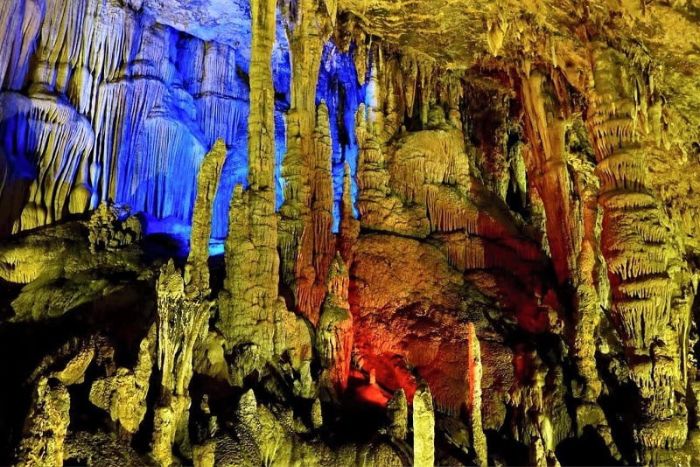
The cave entrance is accessed via a short hike that winds through terraced hills and traditional villages. Inside, the cave reveals a stunning world of stalactites and stalagmites illuminated in golden light. It's a quiet, mystical space where nature has sculpted intricate formations over thousands of years.
Visiting both Meo Vac and Lung Khuy in the same loop gives you a perfect balance between cultural immersion and geological wonder. Together, they showcase why Ha Giang is one of Vietnam’s most diverse travel regions.
The Scenic Route Through Ha Giang’s Highlands
Reaching Meo Vac and Lung Khuy is a journey in itself—one that takes you through the dramatic landscapes of Ha Giang. From winding roads carved into cliffs to emerald valleys and misty peaks, the drive is part of the adventure. Most travelers tackle this route via the Ha Giang Loop, either by motorbike or with a guided tour.
For a comfortable and authentic experience, many adventurers choose to stay with ha giang loop hostels, which offer not only accommodation but also practical travel support. From motorbike rentals and gear to local maps and cultural tips, these hostels are hubs of helpful information and camaraderie among like-minded explorers.

Planning Your Visit for Maximum Impact
Timing your journey is key to enjoying Meo Vac Market at its peak. The market only runs on Sundays, so plan to stay overnight in Meo Vac or Dong Van on Saturday to arrive early. Consider organizing your itinerary so that you visit Lung Khuy Cave on a different day to fully appreciate both experiences without rushing.
Weather in Ha Giang can vary, especially in the mountains. Be sure to bring layers, rain protection, and good walking shoes. Your stay with ha giang loop hostels can make this easier by offering gear and updated weather insights before your trip.
A Place Where Stories Are Still Told
What makes this journey unforgettable isn’t just the sights—it’s the people and stories behind them. From the handwoven fabrics at Meo Vac Market to the ancient silence of Lung Khuy Cave, each stop along the Ha Giang Loop reveals something timeless. You’ll leave not just with photos, but with the feeling of having touched a deeper rhythm of life.
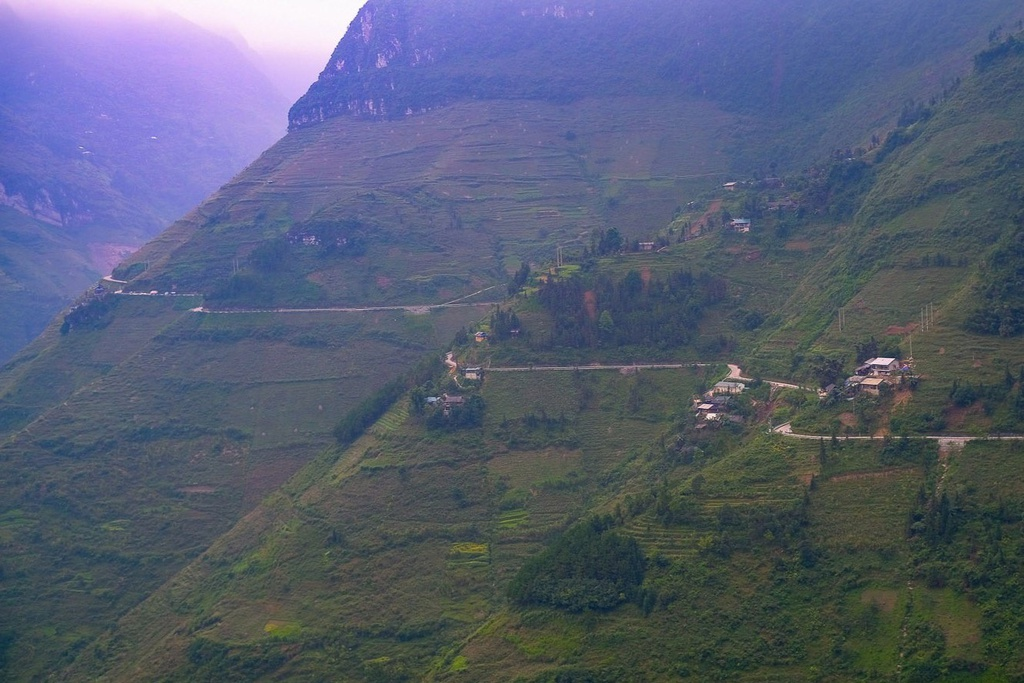
Let ha giang loop hostels be your home base as you explore these wonders. With warm hospitality and local knowledge, they help ensure your trip is rich with meaning, adventure, and authenticity.
